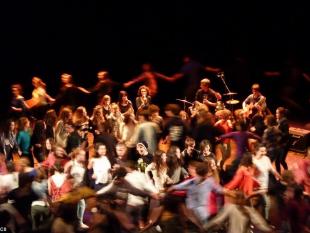Diwan, teaching methods and creativity : a new thesis

A critical approach of the relationship between Creativity, Teaching Methocs and Revitalsiation of Breton language in Diwan immersive schools
Diwan immersive schools are thirty-eight years old. On the one hand, they have contributed to the revitalisation of the Breton language and on the other hand, served as a catalyst for cultural and artistic development in Breton. While previous studies analyse the precipitous decline in the number of speakers and the extreme fragility of the future of the language, this thesis shows how the creativity of people associated with Diwan has overcome ideological and financial difficulties, and reaches through music , theatre and dance, a much wider audience than Breton-speakers alone.
What sort of Breton is spoken at Diwan ? Who are these students who represent 1% of the Breton school population, and what are their artistic practices ? Who are the artists and teachers and what has been the evolution since the pioneers of the late 70s ? Creativity developed by teachers, volunteers, parents and students is all very well, but will it be sufficient to ensure a future for the language ? Drawing on studies by sociolinguists and Psycholinguists on numerous studies in Britain in the classroom and in extra-curricular field, but also in the Basque immersion schools Seaska , and european minority immersive schools too , the author shows that Diwan is a fragile « creativity machine » , which can not continue without a critical look at itself, a structured research, but also without more support from Breton society.
■